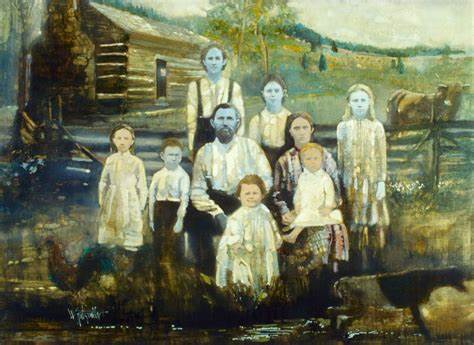Blue Skin (and What To Know About It)

June 4, 2020
On a recent Internet tangent, I chanced upon the Fugates who (assuming you are similarly unacquainted with historically anomalous Americans) were a blue-skinned bunch from the secluded hills of eastern Kentucky.

I was fascinated! Not solely by their blue skin but by how such an abnormality had remained, at large, unknown to the general public. It seemed almost unbelievable that the subject hadn’t yet been turned into a children’s song or legend—or really anything that would have given it a semi-permanent recognition in American history.
So I began my own research on the subject and set out to learn just what this blue skin was all about.
The first records of blue skin in the United States date back to around 1820 when Martin Fugate, a French-born orphan, settled in Troublesome Creek, Kentucky. Fugate was the carrier of an incredibly rare, recessive gene that produced excessive levels of methemoglobin—a nonfunctional and blue version of the red haemoglobin protein—which colored his blood a dark blue as opposed to the usual red, thereby making his skin appear blue. His wife, Elizabeth Smith (although noted to have been as pale “as the mountain laurel that blooms every spring around the creek”) was, by chance, also a carrier of the gene and birthed four (of seven) blue-skinned children.
Given the time, seclusion of eastern Kentucky, and limited understanding of genetics, few people understood how such an anomaly could have been inherited and even fewer dared to associate with it. The Fugates were, accordingly, written off as “demon-possessed,” “unclean,” and “shameful.” That, in turn, led to further seclusion and even intermarriage, and resulted in six more generations of blue skin. More importantly, it led to six more generations of discrimination.
The Fugates, however, were not the only cases of blue skin in the United States.
Towards the end of the century, silver nitrate became a popular remedy for a variety of medical issues—especially anxiety. Unfortunately, the chemical compound proved to have no real, curing effect. Instead, ingesting significant amounts would rupture the consumer’s internal organs and result in a painful death. Ingesting lesser amounts would turn the consumer’s skin an ashen-blue, once the chemical had been thoroughly absorbed into the bloodstream.
Most survivors would then be forced to give up traditional forms of employment and join American “freak shows.”
I guess you could say I learned a thing or two from my little investigation. Firstly: blue skin is the result of excessive amounts of either methemoglobin or silver nitrate. Secondly: blue skin was a means to discriminate against people here in the United States.
It leads me to wonder what modern day condition has replaced blue skin. And whether a seventeen-year-old girl might look back on the issue one day with a moderate-length explanation, imploring that discrimination stop.
But regardless of whether or not the United States’ modern version of blue skin is ever explained, it’s important that we stop discrimination now. As with the Fugates and anxiety-prone, everyone has a story. Whether or not their stories are one day brought to light or explained in an agreeable fashion to the general public should not determine the treatment they receive.
















































































































































